Bethlehem Carol
-
Ships in 1 to 2 weeks
Details
Description
SKU: CF.CM9606
Composed by Paul Salerni. Fold. Performance. 8 pages. Duration 3 minutes, 17 seconds. Carl Fischer Music #CM9606. Published by Carl Fischer Music (CF.CM9606).ISBN 9781491154281. UPC: 680160912780. 6.875 x 10.5 inches. Key: C major. English. Charles A. Coffin (1844-1926).
Bethlehem Carol was the result of a commission in 2000 from the Cathedral Church of the Nativity in Bethlehem, Pennsylvania. The request came from the Cathedrals music director, Russell Jackson; he had very much liked the Italian Fable cum Violin Concerto (The Big Sword and the Little Broom) I had written in 1997 for the Lehigh Valley Chamber Orchestra. Russell chose the text by Charles Coffin, a French poet and educator whose hymn verses were often translated into English. My approach toward setting the poem was my usual one; that is, to translate literally the words into music (note the dips into the minor mode for the cave of Bethlehem and the child of poverty.) But most of all, I wanted to capture the sense of joy and peace brought by the arrival of the Christ Child.
Bethlehem Carol was the result of a commission in 2000 from the Cathedral Church of the Nativity in Bethlehem, Pennsylvania. The request came from the Cathedralas music director, Russell Jackson; he had very much liked the Italian Fable cum Violin Concerto (The Big Sword and the Little Broom) I had written in 1997 for the Lehigh Valley Chamber Orchestra. Russell chose the text by Charles Coffin, a French poet and educator whose hymn verses were often translated into English. My approach toward setting the poem was my usual one; that is, to translate literally the words into music (note the dips into the minor mode for athe cave of Bethlehema and athe child of poverty.a)A But most of all, I wanted to capture the sense of joy and peace brought by the arrival of the Christ Child.
Bethlehem Carol was the result of a commission in 2000 from the Cathedral Church of the Nativity in Bethlehem, Pennsylvania. The request came from the Cathedral's music director, Russell Jackson; he had very much liked the Italian Fable cum Violin Concerto (The Big Sword and the Little Broom) I had written in 1997 for the Lehigh Valley Chamber Orchestra. Russell chose the text by Charles Coffin, a French poet and educator whose hymn verses were often translated into English. My approach toward setting the poem was my usual one; that is, to translate literally the words into music (note the dips into the minor mode for "the cave of Bethlehem" and "the child of poverty.") But most of all, I wanted to capture the sense of joy and peace brought by the arrival of the Christ Child.
Bethlehem Carol was the result of a commission in 2000 from the Cathedral Church of the Nativity in Bethlehem, Pennsylvania. The request came from the Cathedral's music director, Russell Jackson; he had very much liked the Italian Fable cum Violin Concerto (The Big Sword and the Little Broom) I had written in 1997 for the Lehigh Valley Chamber Orchestra. Russell chose the text by Charles Coffin, a French poet and educator whose hymn verses were often translated into English. My approach toward setting the poem was my usual one; that is, to translate literally the words into music (note the dips into the minor mode for "the cave of Bethlehem" and "the child of poverty.") But most of all, I wanted to capture the sense of joy and peace brought by the arrival of the Christ Child.
Bethlehem Carol was the result of a commission in 2000 from the Cathedral Church of the Nativity in Bethlehem, Pennsylvania. The request came from the Cathedral’s music director, Russell Jackson; he had very much liked the Italian Fable cum Violin Concerto (The Big Sword and the Little Broom) I had written in 1997 for the Lehigh Valley Chamber Orchestra. Russell chose the text by Charles Coffin, a French poet and educator whose hymn verses were often translated into English. My approach toward setting the poem was my usual one; that is, to translate literally the words into music (note the dips into the minor mode for “the cave of Bethlehem” and “the child of poverty.”) But most of all, I wanted to capture the sense of joy and peace brought by the arrival of the Christ Child.
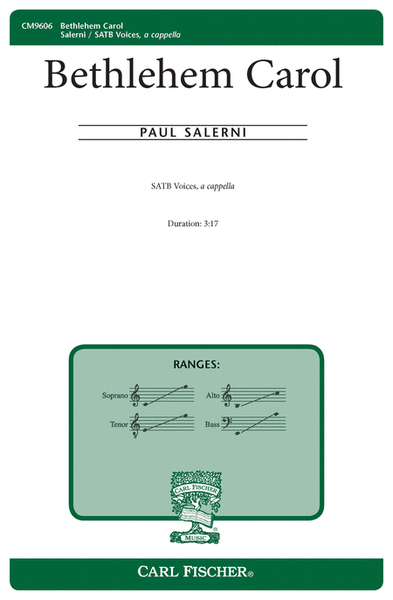
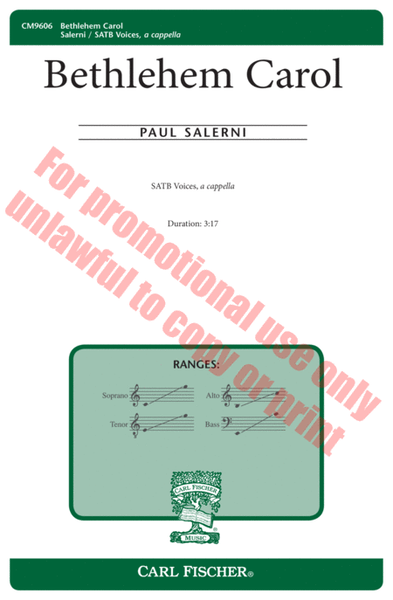
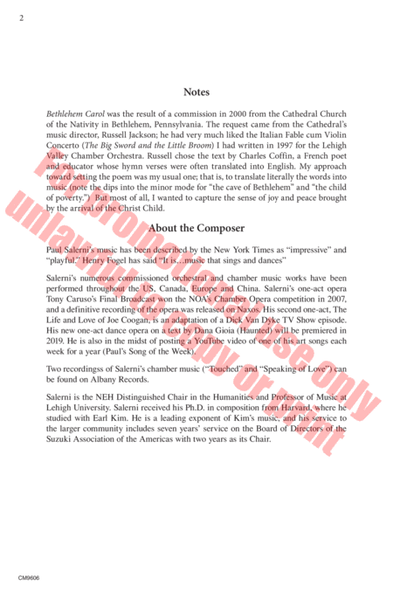
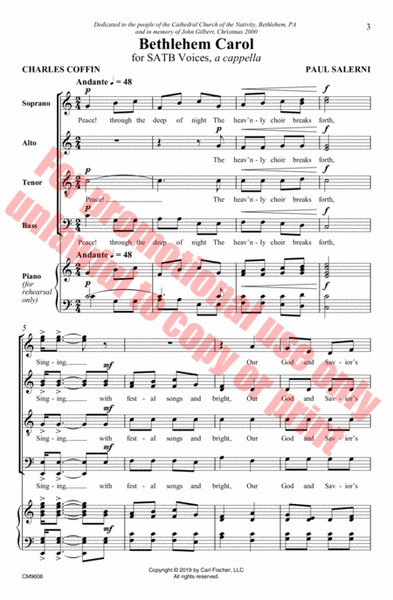
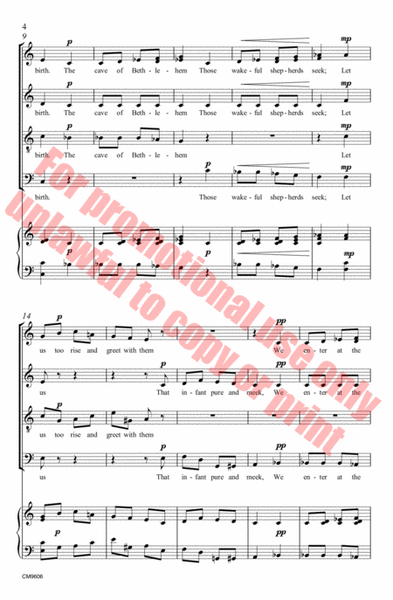

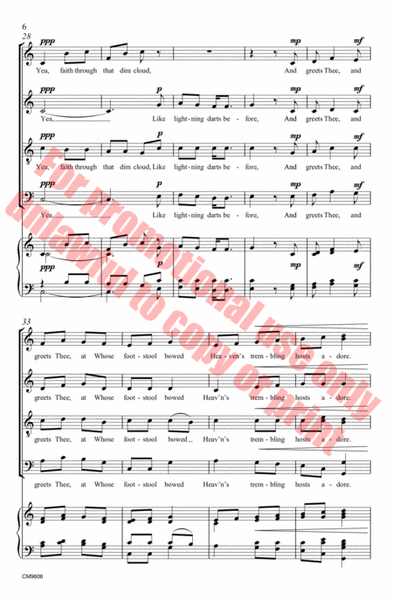
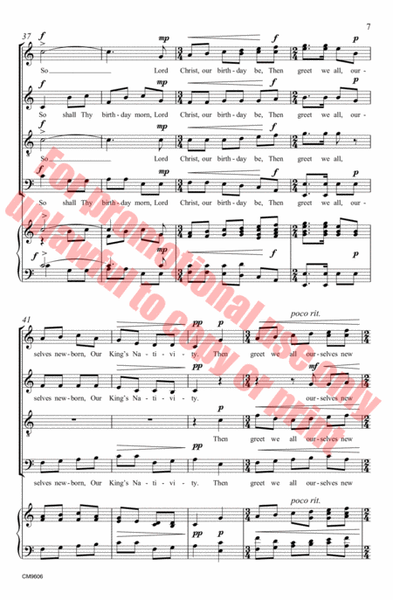
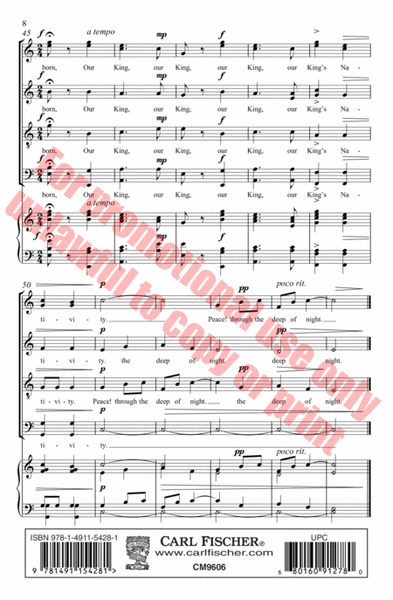
 Share
Share